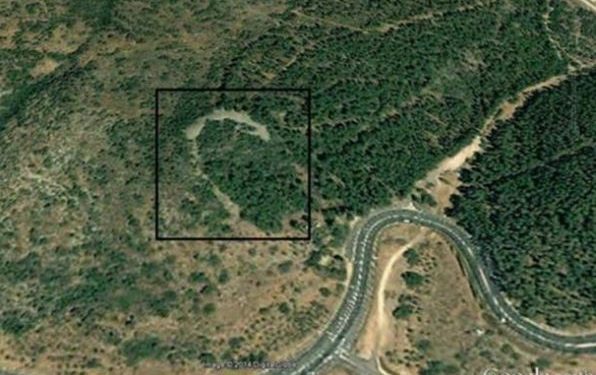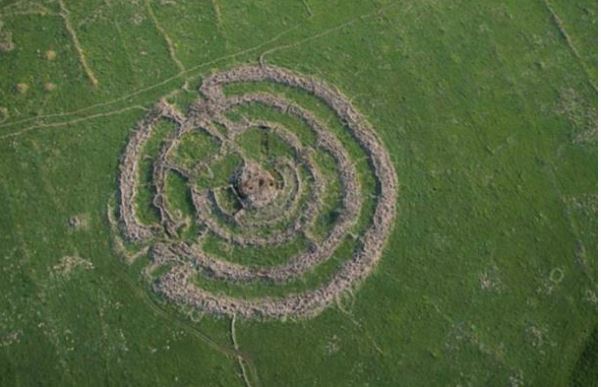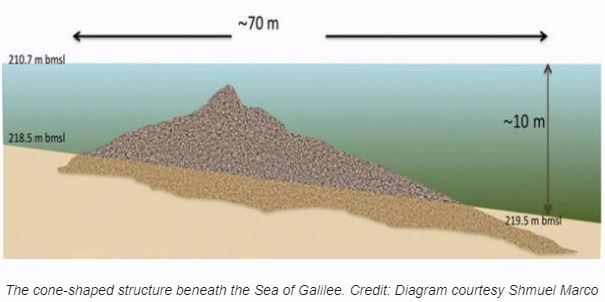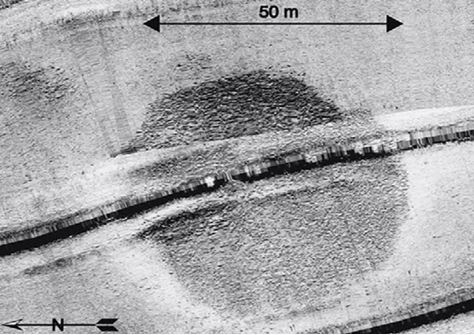At the bottom of the Sea of Galilee in northern Israel, a massive monument and several enigmatic structures, including a huge stone wheel and a moon-shaped monument, have been recently discovered. These mysterious structures have puzzled archaeologists worldwide, raising questions about their origins and purpose.

While these structures may go unnoticed from the roadside, they are clearly visible from the air or underwater. The prehistoric stone monuments of Gilgal Refaim, Jethro Cairn, and the circular structure submerged in the Sea of Galilee have remained unnoticed for centuries in the disputed regions of the Golan and the Galilee. To this day, archaeologists remain uncertain about who built them and their intended purpose.
Various theories have emerged, suggesting that these structures could have served as ancient calendars, ceremonial sites, or locations for “sky burials,” where deceased bodies were placed on stone mounds to be consumed by vultures. Another intriguing aspect is the absence of archaeological evidence for a nearby city, leading some to propose that these structures were monumental and held symbolic significance.

Determining the age of these structures is another enigma, with estimates ranging from 3,000 to 12,000 years old, making them potentially older than the pyramids of Giza and Stonehenge in Great Britain. What remains certain is that these structures are substantial and significant.
One of the remarkable structures is the Moon Structure of Jethro Cairn, a crescent-shaped stone monument larger than a football field in northern Israel. While Bronze Age pottery found at the site suggests it was built between 3050 and 2650 BCE, it may be even older. The monument’s crescent shape may symbolize the ancient Mesopotamian moon god Sin.

Furthermore, a cone-shaped structure, located about 9 meters beneath the Sea of Galilee, has stumped archaeologists since its discovery in 2003. The massive cone structure, built from basalt rocks, measures 70 meters at the base, stands 10 meters tall, and weighs approximately 60,000 tons. It is twice the size of Stonehenge and was likely constructed on dry land and later submerged. Its age remains uncertain, but it was undoubtedly of great importance to its builders.
Lastly, the prehistoric monument known as Gilgal Refaim consists of over 42,000 basalt rocks arranged in five concentric circles, weighing over 40,000 tons. It is associated with a large 4.5-meter burial chamber at its center. Some circles align with astronomical patterns, particularly during the June and December solstices, indicating their potential use for solar and lunar eclipse predictions.

Despite these intriguing findings, the true purpose and builders of these structures remain a mystery. It raises questions about whether the ancient world possessed advanced knowledge or had access to information we are unaware of. There are myths about sky beings and extraterrestrial influences in various ancient texts, suggesting an untold history. These structures were built with such precision that it implies the involvement of an advanced prehistoric society. While their origins and purposes remain unclear, they provide a tantalizing glimpse into a forgotten past where scientific knowledge may have been more widespread than we currently understand.
Furthermore, it’s worth noting that many UFO enthusiasts believe that due to their astronomically aligned positions, these structures could have served as astronomical observatories or command centers of ancient aliens. This theory is supported by the fact that the knowledge used to construct these objects was not known to the human civilization of that time; it simply appeared suddenly out of nowhere.






